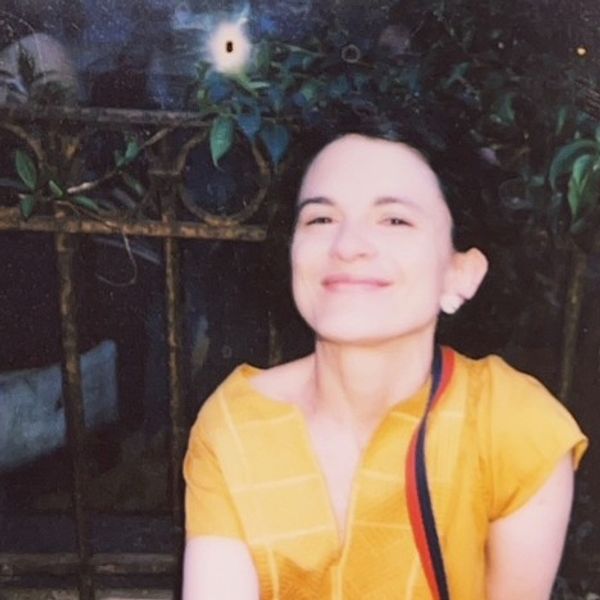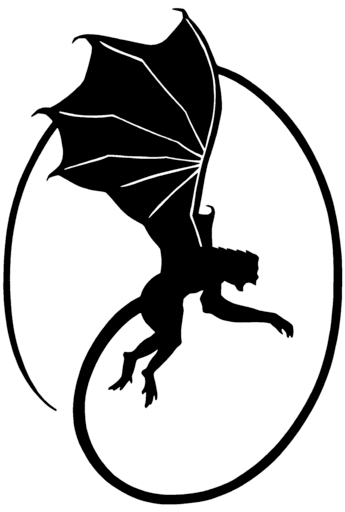Lia Purpura, Wasp Nest (detail), featured in AGNI 102
Poetry Lesson
The streets are empty, the shops have closed, the air still smells of last night’s rain. The sky above is fresh, pure, unbroken blue: it’s the blue of the skies in someone else’s childhood, in the childhood of someone who once felt truly young. They walk along under the plane trees, through the sun-dappled streets of the town, hand in hand. She remarks on his new yellow shoelaces, says how nice they look against the black of his boots, and in that moment feels how she’s missed him—what relief she feels to be walking in their way through the town, slowly, slowly toward the stone bench in the little garden square, hand in hand.
He’s been teaching a packed schedule, every school day for a month. He’s been waking at five to catch the bus to the city or to towns even smaller than this one, lugging his satchel stuffed with poems to classrooms far and wide. This always happens in the spring, he explains; it has to do with a certain grant for artist visits in the schools, which the teachers inevitably forget about, then rush to use up by the end of the year. For the most part the students just treat it as recess: the younger ones throw things and bark at each other, the older ones scroll on their phones. But once in a while, he tells her, a class catches on.
The sun blinks bright through the lattice of leaves and he begins to talk about a class from last week, a group of nine- and ten-year-olds at a school built on the ruins of a military barracks in the center of the city, overlooking the old port. On a whim he’d brought a book of black-and-white photographs to show them, an assemblage of works by Fukase, poet of dailiness and doom. An odd choice, perhaps, for a gaggle of preteens, but they’d been drawn in almost immediately—as he turned the pages they had looked on with the limpid, hungry expressions of those who move habitually among ghosts. Fed recently on Greek tragedy and the fairy tales of Perrault, their minds were alive to three-part structure: the wife photographed daily, to her amusement or chagrin, from the fourth-floor window, on her way to work; once she’d left him, the yawning cats snapped over and over at arm’s length, every barb on their rough tongues visible; when death was near, ravens, only ravens, grainy blurs against a gray sky or dark tracks in snow.
They wrote and they wrote in their exercise books, some looking up bleary-eyed every so often, and others keeping their heads low, their own pink tongues poking out the corners of their mouths. Faster and faster they wrote and, when he felt the air change—that slight rise in pressure—he turned and walked silently to the window. In the courtyard below, the tops of the twin almond trees formed one frothy, swaying cloud of white. Children smaller than the ones in the room (they must have come from the opposite wing of the building, the école maternelle) were scattered on the lawn doing a kind of gentle calisthenics that involved circling their arms, hugging themselves, and rolling their heads from side to side. There was a slowness, a gauziness about their movements: they shimmered. They seemed at once to belong in a Pointillist painting and a synth-pop music video. Just as he was taking his phone from the pocket of his jacket, a pair of boys beneath the blossom-cloud turned in tandem, lifting their faces to him, and waved.
~
She closes her eyes now and pictures it, the photo he’s telling her he took: the gossamer outlines of the boys, their strange half-parted smiles. She keeps her eyes closed and gives his hand a little squeeze. The garden square is receding from them, she knows. She can feel it shrinking away to the size of a distant star behind her eyelids. The sidewalk is suddenly hot beneath her feet and it echoes with each of their steps. Farther off, the sound of waves hitting rock, the unmistakable scent of the sea. And the other thing, he’s saying, is when I turned back around to face them, the students—the entire room—had gone to black and white. In that instant. All the color drained away. It occurs to her only now that he’s told her this story before, and at that same moment, she realizes that if she squints she can see right through her closed lids: the long sloping avenue before them, and beyond it a blue that’s somehow bluer with her eyes closed—a blue that you could waste a whole life looking at, or that might drive you insane. I wasn’t shocked, he says. I mean, I’ve always been susceptible. To tricks of the light. And isn’t that all color is, anyway—a continuous hallucination. The high sun slashes through a layer of cloud and for a second it lances her retinas, blinding her. When you know the universe is an illusion, he says, you can finally stop fumbling through the barracks of logic and step out into the dead middle of the day unarmed. The blankness is fierce, totalizing, but then it dissipates and she can squint at the sun’s reflection on the water: a glittering minaret in the distance, a ladder of fire. The children had set down their pencils, he says. Their eyes were ash-colored but laughing. You could see it in their faces, he says: they had written themselves clear to the other side. Already we have walked very far, she thinks, but the sea doesn’t appear any closer. They had scratched their way into the abyss, he says, and I’m telling you, dear, they came out laughing. A low rasping cackle fills her ears then and she turns to him, blinks: he has the head of a raven, the fiendish black eye. She blinks again: he has his normal head. I held up my phone to show the photo, he says, and cocks his normal head the way a raven would.
This is the part where her feet begin to melt into the asphalt, where she grabs the sleeve of his jacket for support. This is the part where she knows that she is holding onto ashes, onto nothing, a shrill burst of caw-caw-cawing as distant already as the waves. She tries hard to picture the yellow of his shoelaces—if I can just stay with that yellow, she thinks, then I won’t sink all the way beneath the earth—but she sees only blue-black feathers and, sinking, she remembers how it ends: Oh yes, monsieur! the children cried. We know! they sang in a chorus. Life is poetic, monsieur, they whispered. We know.

Katie Shireen Assef
Katie Shireen Assef’s fiction and her translations from French and Italian have appeared in 3:AM, The Dial, Blue Arrangements, Terrazzo Mag, Kenyon Review, and elsewhere. She lives in Marseille, France. (updated 10/2025)
